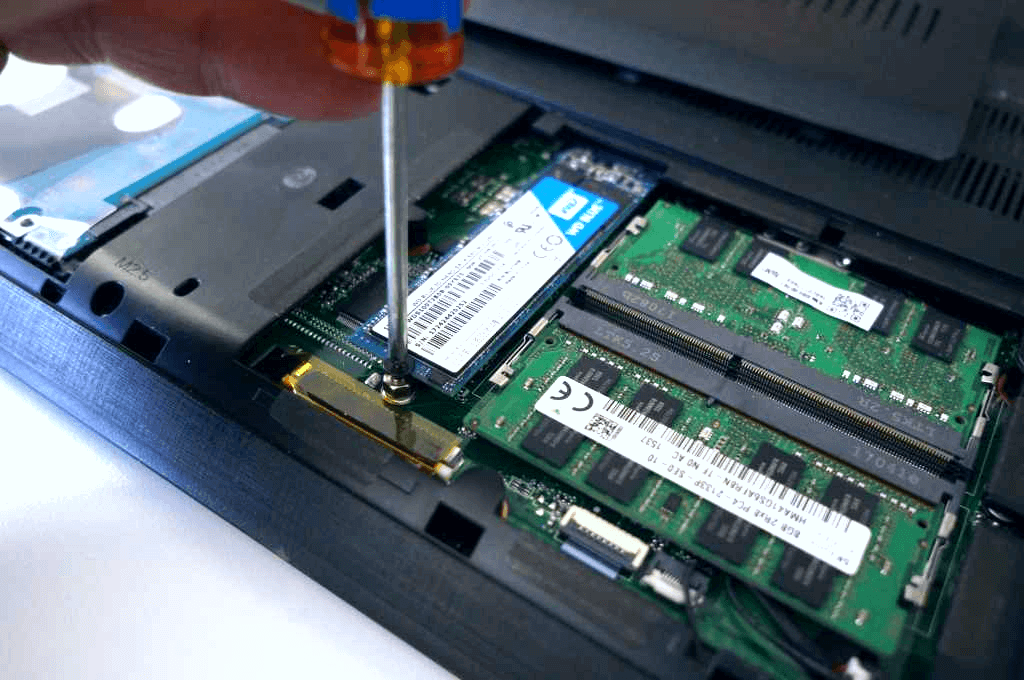Solid State Drive (SSD) is a data storage device that uses flash memory to store data. Compared with traditional mechanical hard disk drives (HDD), it has faster read and write speeds, lower power consumption, and higher reliability. SSDs have been widely used in various computing devices, from personal computers, servers to mobile devices. This article will introduce the structure, working principle, types, and application scenarios of SSDs in detail.
The Structure of SSD
Components and Architecture
NAND Flash Memory: At the core of every SSD is NAND flash memory. Unlike volatile memory types, NAND retains data even when powered off, making it an ideal storage medium. Data is stored in a grid of cells, which can be single-level (SLC), multi-level (MLC), triple-level (TLC), or quad-level (QLC), each offering different balances of speed, endurance, and cost.
Controller: The controller acts as the brain of the SSD, managing data storage, retrieval, and maintenance tasks. It ensures efficient data distribution through techniques like wear leveling, which spreads write and erase cycles evenly across cells, prolonging the drive's life.
Interface: The interface connects the SSD to the computer's motherboard. SATA is common in older systems, offering adequate speed, while NVMe (via PCIe) provides cutting-edge performance by directly interfacing with the CPU, eliminating the bottleneck of slower interfaces.
Cache: To increase the data reading and writing speed, SSDs are usually equipped with a certain amount of cache. The cache can be DRAM (dynamic random access memory) or part of the flash memory itself. The existence of a cache can effectively reduce the delay of data access.

How SSDs Work
SSDs operate through a series of sophisticated processes. Unlike HDDs, which write data sequentially on a spinning disk, SSDs store data electronically in pages, which are grouped into blocks. Due to the nature of flash memory, data can only be written to empty pages, making garbage collection necessary to create free space for new data. This process consolidates data and erases blocks, enabling continuous operation without performance degradation.
It seems hard to understand? Don’t worry, here's how they work in a straightforward way:
Data Storage in SSDs
Imagine an SSD as a grid or a block of apartments. Each apartment is a cell that can hold information. These cells are made from a special kind of memory called NAND flash. Unlike a traditional hard drive that uses spinning disks, an SSD stores data electronically, which makes accessing data much quicker.
Key Components
NAND Flash Memory: This is where all the data is stored. It's like the storage space in the apartment building. NAND flash is non-volatile, meaning it doesn't lose data when the power is turned off.
Controller: Think of the controller as the building manager. It knows where every piece of data is stored and how to retrieve it when needed. It also helps organize the data, ensuring it is evenly distributed across the cells, which helps extend the life of the SSD.
Interface: This acts like the main entrance to the building. It connects the SSD to your computer, allowing data to flow in and out. Common interfaces include SATA and NVMe, with NVMe being faster because it connects directly to the computer's processor.
Data Management
SSDs manage data using a few special techniques:
Wear Leveling: This process ensures that all the cells in the NAND flash wear out evenly. It's like making sure no single apartment gets used more than the others, extending the overall life of the building.
Garbage Collection: Over time, some cells get filled with old or unused data. Garbage collection clears out these cells, making room for new data. It's similar to cleaning out an apartment to prepare it for new tenants.
TRIM Command: When you delete a file, the TRIM command helps the SSD know which data is no longer needed. This makes future write operations more efficient and helps maintain the SSD's performance over time.
What is Solid State Drive Lifespan
Factors Affecting Lifespan
The lifespan of an SSD is primarily determined by its write/erase cycles. Each write or erase operation causes a small amount of wear to the memory cells. Over time, this wear can reduce the cells' ability to hold data reliably. Environmental factors such as temperature and humidity also impact lifespan, as does the drive's workload. For instance, drives subjected to constant read/write operations may wear out faster.
Average Lifespan of an SSD
Manufacturers often specify SSD lifespan using metrics like Total Bytes Written (TBW) or Drive Writes Per Day (DWPD). These figures offer estimates of how much data can be written over the drive's life. For example, a consumer-grade SSD might offer a TBW of 150 to 600 TB, depending on the model and usage conditions. In general, SSDs are designed to last several years under typical consumer workloads.

How to Check the Lifespan of an SSD
Tools and Software
Monitoring an SSD's health and lifespan is crucial for maintaining optimal performance. Tools like CrystalDiskInfo, Samsung Magician, and Kingston's SSD Manager provide detailed reports on drive health, including temperature, read/write speeds, and error rates.
Understanding SMART Attributes
SMART (Self-Monitoring, Analysis, and Reporting Technology) is an essential feature for tracking SSD health. It provides insights into various parameters, such as Total Bytes Written (TBW), Power-On Hours, Wear Leveling Count, and more. By regularly reviewing these attributes, users can gauge the health of their SSD and take preventive measures if needed.
Interpreting Drive Health Indicators
Health indicators, often represented as a percentage, give a clear snapshot of an SSD's remaining lifespan. A high percentage indicates a healthy drive, while a decreasing percentage may signal potential issues. It's advisable to perform regular health checks and act on any warning signs promptly.
Tips to Extend SSD Lifespan
Best Practices for SSD Maintenance
To maximize an SSD's lifespan, you need to implement best maintenance practices. Regularly updating firmware ensures that the drive benefits from the latest performance and reliability improvements. Additionally, minimizing unnecessary write operations, such as frequent downloads or excessive logging, can help reduce wear.
Backup and Data Management
Backing up data regularly is a crucial step in SSD maintenance. This can safeguard important information and reduce the strain on the drive by preventing frequent rewrites. Effective data management, such as using cloud storage for infrequently accessed files, can further extend the drive's lifespan.
Endnote
By understanding how SSDs work and keeping an eye on their health, you can make sure your drive lasts a long time.
As technology marches on, we believe SSDs will going to get better—faster, more durable, and more affordable.
If you want to learn more knowledge abourt 3C products, just follow VCOM.
Tag:Solid State Drive,SSD




